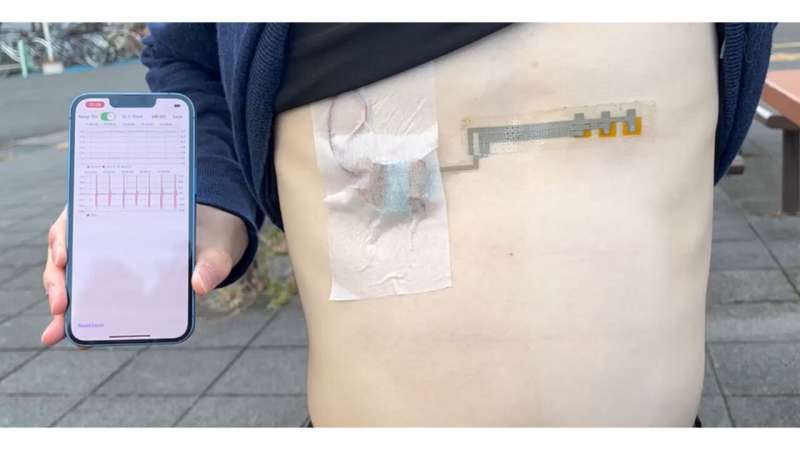Folding design leads to heart sensor with smaller profile

As advances in wearable devices push the amount of information they can provide consumers, sensors increasingly have to conform to the contours of the body. One approach applies the principles of kirigami to give sensors the added flexibility.
Researchers want to leverage the centuries-old art of cutting paper into designs to develop a sensor sheet that can stretch and breathe with the skin while collecting electrocardiographic data. In Applied Physics Reviews, the sensor made by researchers in Japan uses cuts in a film made of polyethylene terephthalate (PET) printed with silver electrodes to fit on a person's chest to monitor his or her heart.
"In terms of wearability, by applying kirigami structure in a PET film, due to PET deformation and bending, the film can be stretchable, so that the film can follow skin and body movement like a bandage," said author Kuniharu Takei, from Osaka Prefecture University. "In addition, since kirigami structure has physical holes in a PET film, skin can be easily breathed through the holes."
Unlike the related origami, which involves strictly paper folding, the art of kirigami extends its methods to paper cutting as well. Such a technique allows relatively stiff materials, like PET, to adapt to their surfaces.
As companies push for less noticeable wearables, attention has turned to optimizing picking out electrical signals from the heart out of background noise. Devices like the group's that ensure a snugger fit are an attractive solution.
The team found the optimal size of the sensor is roughly 200 square millimeters with a distance of 1.5 centimeters between electrodes. At that size, they were able to detect enough signal from the heart to be used in a smartphone app.
"The major challenge was how to realize the kirigami structure without using a precise alignment process between the silver electrodes and kirigami cutting," Takei said.
Their device with the sensor could accurately and reliably relay heart data across multiple people doing many types of everyday movements, such as walking or working while seated in a chair.
The group next aims to integrate more sensors to measure multiple types of data from the surface of the skin to help with early diagnosis of disease, including future medical trials.
"We understand that the new mechanism or new material developments makes better impact to the field," Takei said. "However, without improving the stability, it cannot be used for the practical applications, even if the sensor performance is excellent."
More information: Wireless, minimized, stretchable, and breathable electrocardiogram sensor system, Applied Physics Reviews (2022). aip.scitation.org/doi/full/10.1063/5.0082863




















